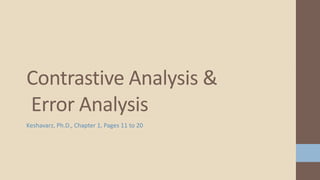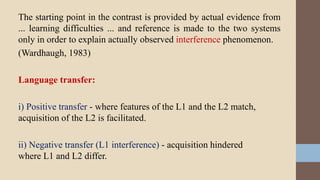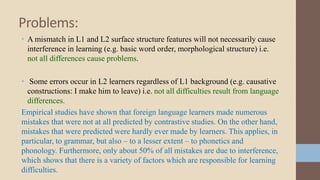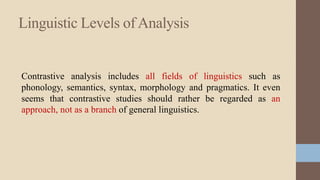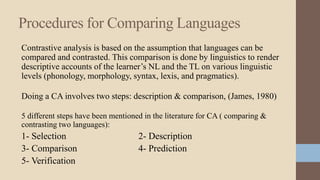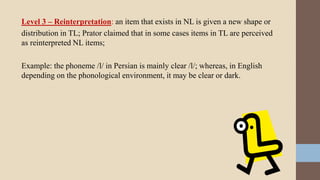The document discusses contrastive analysis and error analysis in language learning. It covers:
1) The weak, moderate, and strong versions of contrastive analysis hypothesis (CAH) and their limitations in predicting learner errors.
2) Factors like language transfer, both positive and negative, that can facilitate or hinder second language acquisition.
3) Problems with CAH predictions and the finding that many errors are not due to language differences.
4) Procedures for comparing languages in a contrastive analysis, including selecting areas, describing languages, comparing features, predicting difficulties, and verifying predictions.
5) Hierarchies of difficulty proposed to formalize predictions, including six categories ranging from
